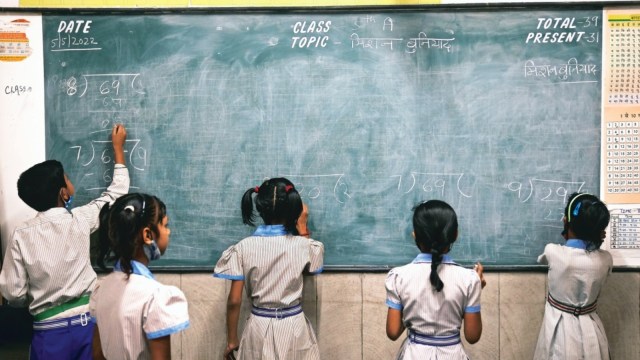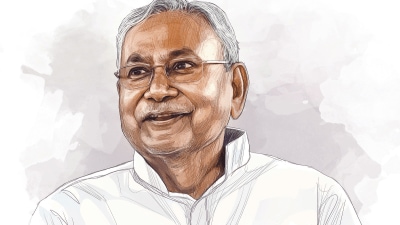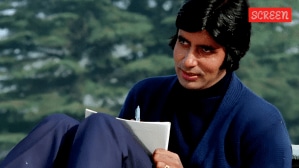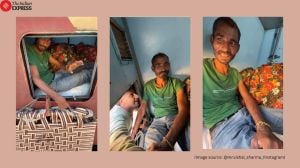Bucking national trend, more primary students in private schools than govt ones in these states
This survey, the first of its kind, confirms findings of the 2021-22 UDISE survey (Unified District Information System for Education) from these three states.
 There are also states where an overwhelming majority attend government schools. West Bengal has seen the lowest percentage of kids in private schools (5%), followed by Tripura (6.2%), and Odisha (6.3%).
There are also states where an overwhelming majority attend government schools. West Bengal has seen the lowest percentage of kids in private schools (5%), followed by Tripura (6.2%), and Odisha (6.3%).
While government schools continue to enroll the majority of school-going children nationwide, the most recent data from the National Sample Survey Office (NSSO) on primary school enrolment reveals that three states continue to buck this trend.
In Classes 1 to 5, Haryana, Manipur, Telangana, and Puducherry (Union Territory) have more children studying in private schools than in government ones, according to the Comprehensive Annual Modular Survey (CAMS) 2022-23, released last month.
This survey, the first of its kind, confirms findings of the 2021-22 UDISE survey (Unified District Information System for Education) from these three states.
According to the latest CAMS survey, the national average for children enrolled in private (or unaided) schools in primary classes is 23.4%, compared to 66.7% for government schools.
However, in Haryana, 45.6% of children are in private schools and 40.2% in government schools; in Telangana, 57.5% are in private schools and 30.5% in government schools. Manipur has the highest percentage of primary school children in private schools at 74%, compared to 21% in government schools (see chart).
There are also states where an overwhelming majority attend government schools. West Bengal has seen the lowest percentage of kids in private schools (5%), followed by Tripura (6.2%), and Odisha (6.3%).
“The rise in private school enrollment is driven by both higher disposable incomes and growing parental aspirations,” said Rukmini Banerjee, Chief Executive Officer of Pratham Education Foundation, which conducts the ASER (or Annual Status of Education Report) survey on learning outcomes every year. “While government schools often teach in regional languages, private schools are generally perceived to teach primarily in English—though that may not always be accurate. Additionally, low-cost or budget private schools have proliferated nationwide.”
Even as the national picture shows the scales tipped in favour of government schools in terms of enrollment, a breakdown of CAMS enrollment data in rural and urban areas reveals a different trend.
In urban areas, more primary school children are enrolled in private schools — 43.8% of children in primary classes attend private schools, compared to 36.5% in government schools.
Amongst states, in urban areas, at least half of the total states in the country (Andhra Pradesh, Haryana, Himachal Pradesh, Jharkhand, Karnataka, Madhya Pradesh, Manipur, Punjab, Rajasthan, Telangana, Tamil Nadu, Uttarakhand and Uttar Pradesh) and two UTs (Jammu and Kashmir and Puducherry) see more children going to private than public schools.
In rural areas, all States and UTs have seen a higher percentage of kids in government schools than private ones, except for Manipur and Telangana.
The Comprehensive Annual Modular Survey, 2022-23 covered 3,02,086 households — 1,73,096 in rural areas and 1,28,990 in urban areas. Apart from education indicators such as enrolment in public versus private schools in rural and urban areas, it also covers findings on out-of-pocket expenditure on health and ability to use mobile and internet, among other things.
The gender breakdown of data shows that among girls enrolled in primary school in the country, 22.2% are in private schools and 68.4% are in government schools. A slightly higher percentage of 24.4% of boys enrolled in primary school are in private schools, while 65.3% of them are in government schools.
The percentage of 6- to 10-year olds enrolled in primary school in rural areas is higher than in urban ones. The percentage of 6- to 10-year-olds enrolled in primary classes in urban areas is 89.2%, while in rural areas this figure is a slightly higher 90.5%.
The percentage of 6- to 10-year-old girls enrolled in primary school in urban areas is 88.7%, against a higher figure of 90.3% in rural areas. For boys, the percentage of 6-10 year olds enrolled in primary school in urban areas is 89.6%, and in rural areas this is a marginally higher figure of 90.6%.



- 01
- 02
- 03
- 04
- 05



























